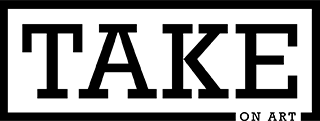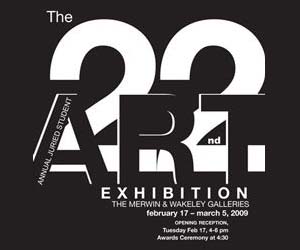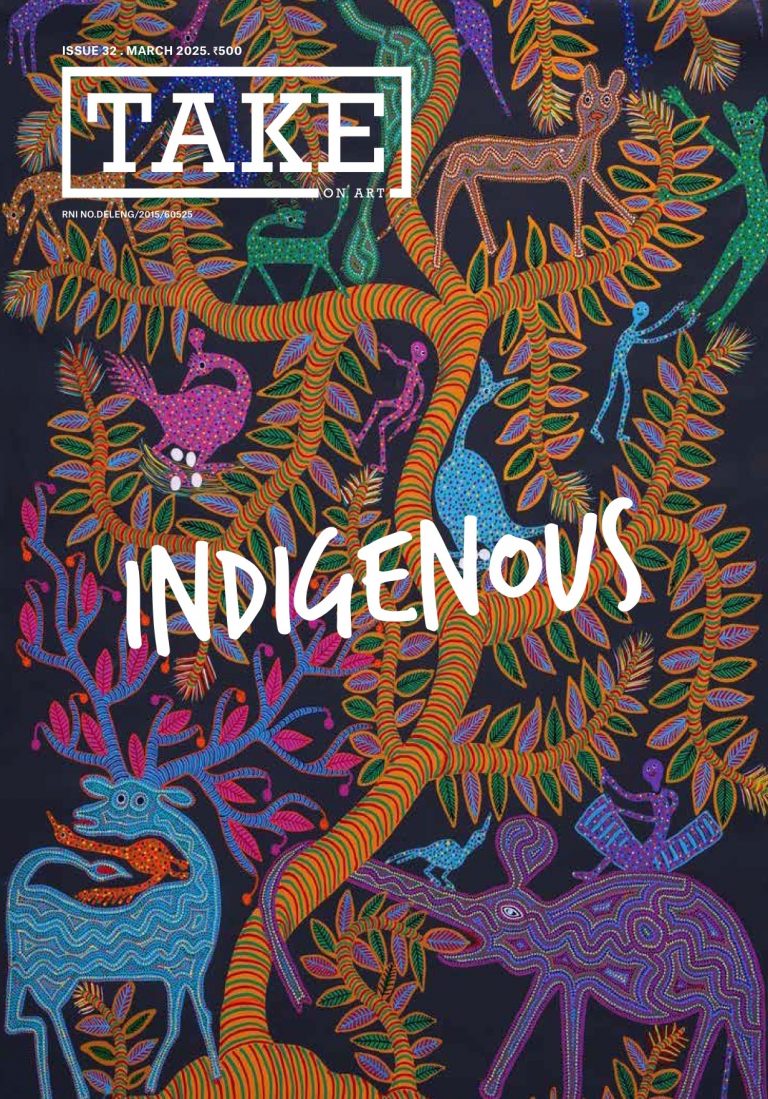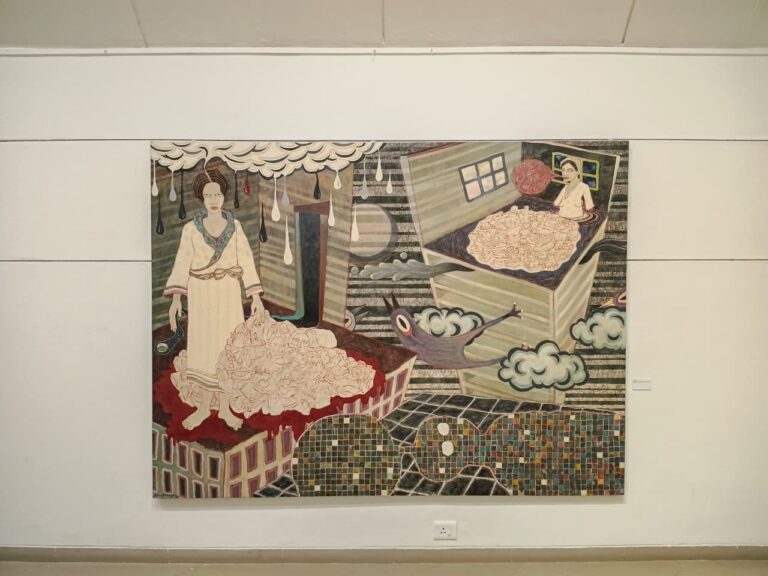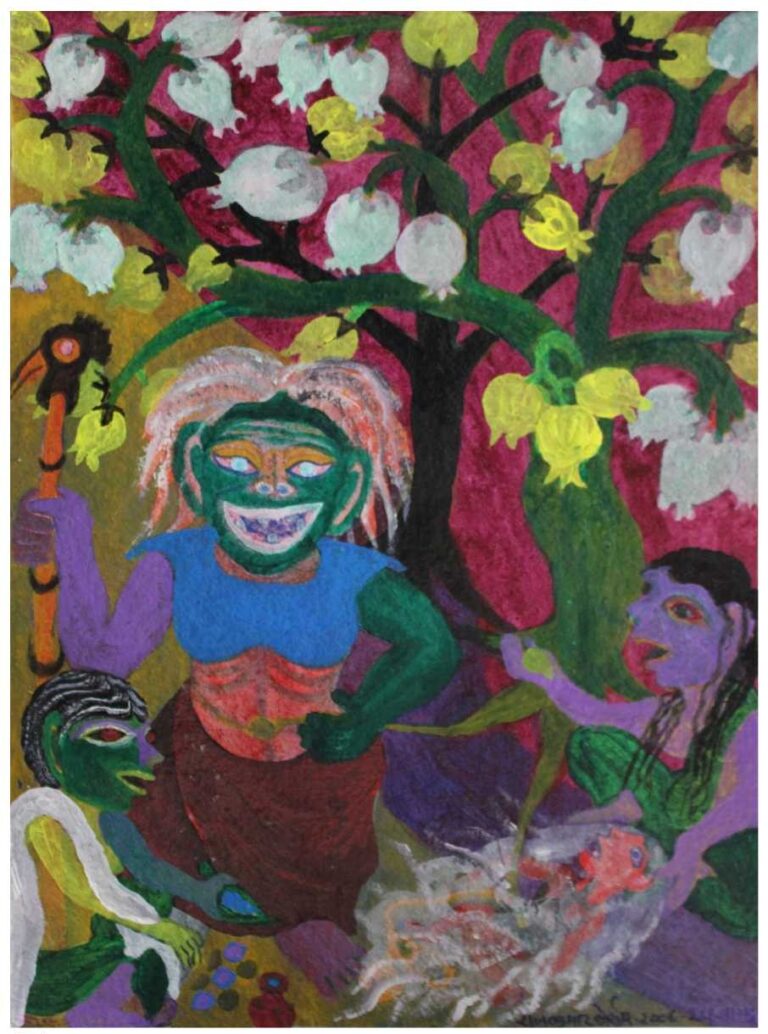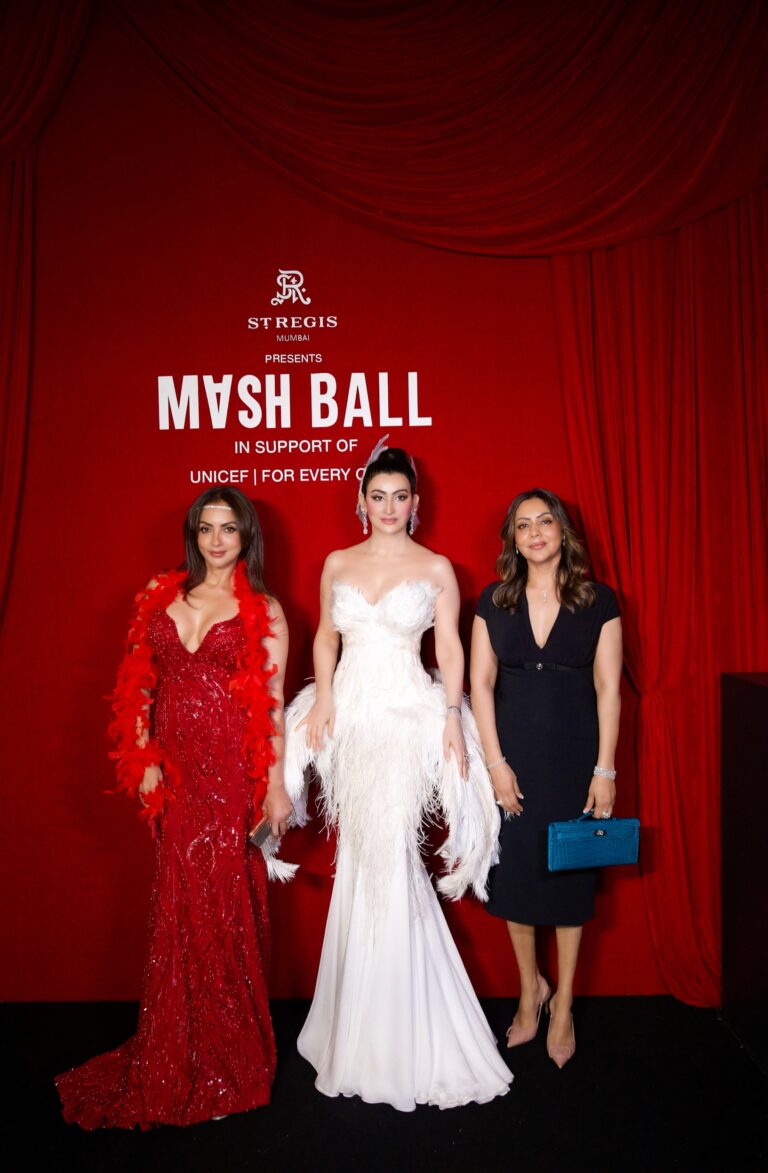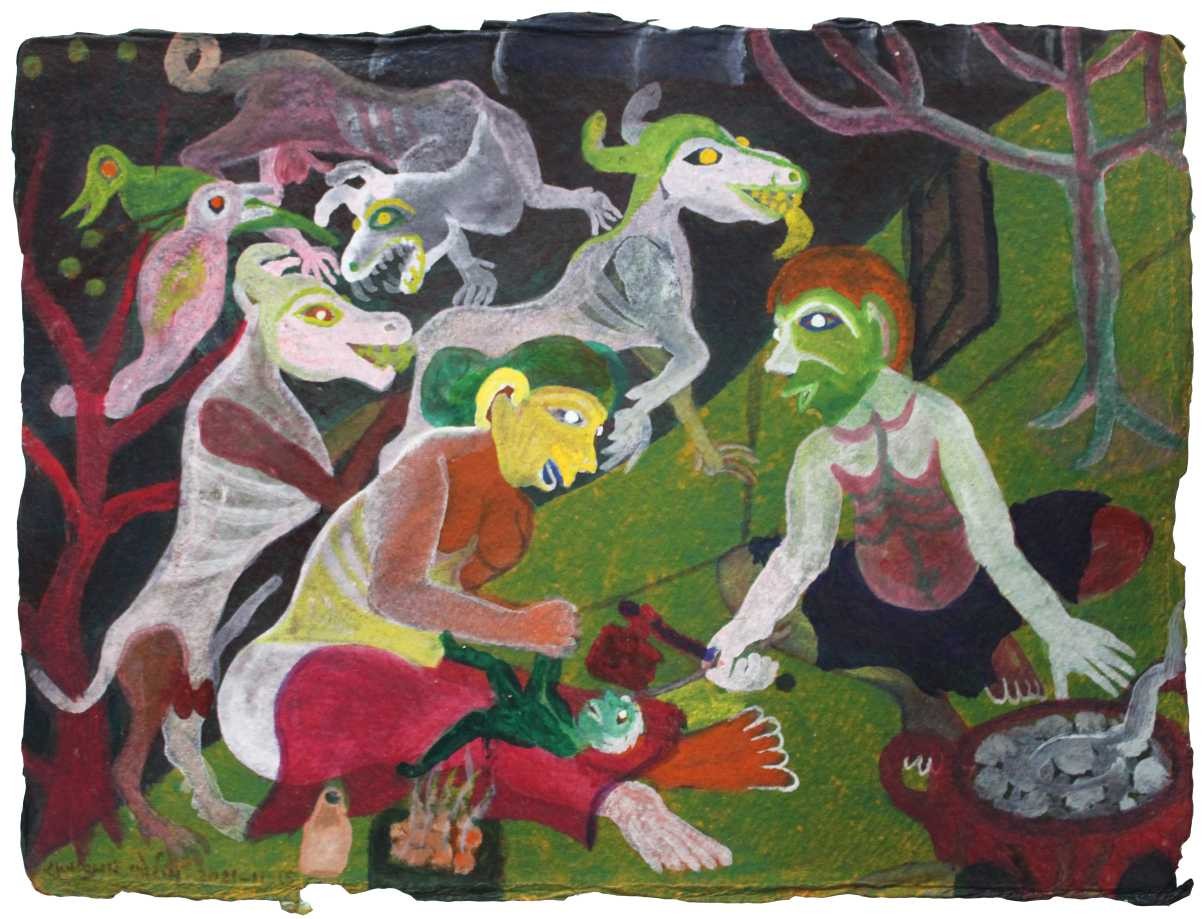 Rajkumar Korram, Untitled, 2021, Acrylic and watercolour on paper, 11 x 15 inches.
Rajkumar Korram, Untitled, 2021, Acrylic and watercolour on paper, 11 x 15 inches.
An indigenous artist and founding member of the artist-activist collective Dialogue Interactive Artists Association (DIAA) in Bastar, Chhattisgarh, Rajkumar Korram has developed a practice attentive to both ecological fragility and the militarised atmosphere in which ordinary life unfolds. Titled Far Reaching Earth, Far Extending Sky, Spread like a Mat, Covered like a Bowl, his solo exhibition at The Guild in Mumbai, does not stage these concerns as distant spectacles but as environments already lived in: where forests vanish at a catastrophic pace, firearms circulate with disquieting ease and nature is at risk of being reduced to a remote abstraction.
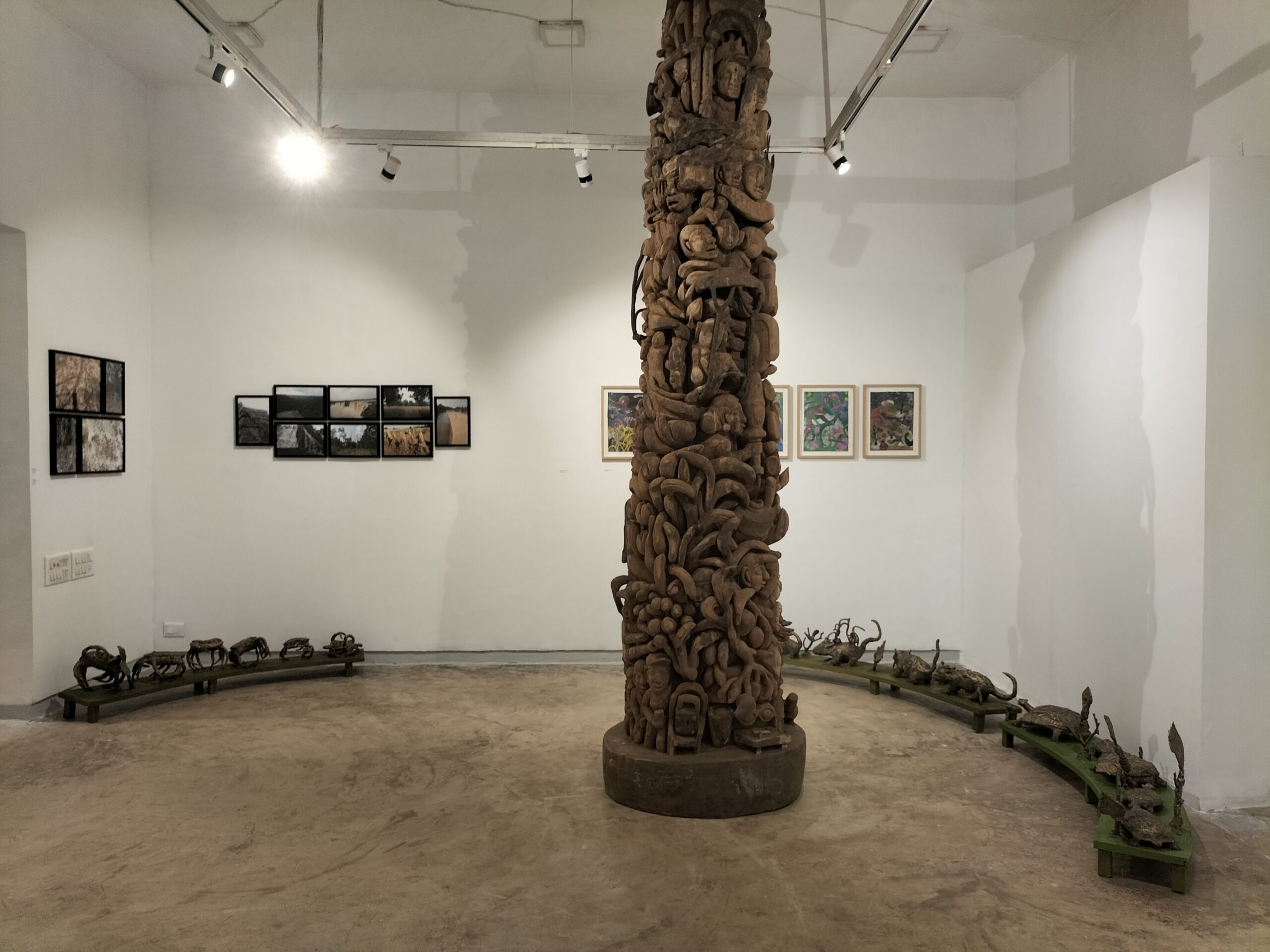
The three wooden Khambas (pillars) stand at the centre of the exhibition, their columnar bodies resembling the entangled growth of a banyan tree’s trunk. Each is carved with stories arranged from base to top, compressing ecological, social and spiritual registers into a single form. The Khamba has become a shared motif among DIAA artists, and is broadly based on the memorial pillars made by the local Dandami Maria tribe. The Khambas brim with stories and symbolism and are consequently densely carved, to the point where it is difficult to discern a clear narrative from the sequence of images without verbal guidance from the artist. This is a common feature among narrative art forms practiced by indigenous communities across the country (such as Phad or Cheriyal), where such imagery are not mute objects but illustrations that are decodified by a performer before an audience. This is contrasted with the bow and arrow more typical of pre-industrial hunting practices in the area, which operated at a slower pace, allowing nature to recover and maintain ecological balance.
If the Khamba(s) function as vertical accumulations of narrative, the twenty-five acrylic and watercolour paintings depict snippets of life in Bastar. The humans, animals and spirits in these works, enveloped by an ever-present forest, are equal in scale, dissolving both perspective and hierarchies of size. Many of the figures are zoomorphic, unsettling the viewer with colourful eyes, broad smiles and wide-ranging skin tones. The paintings evoke hallucinations, emphasising the psychic potential of a life close to nature and by implication the discomfort experienced when one can only view it from a distance. Fear, of spirits, becomes a way to approach the ecological collapse already underway, refusing to let it remain abstract.
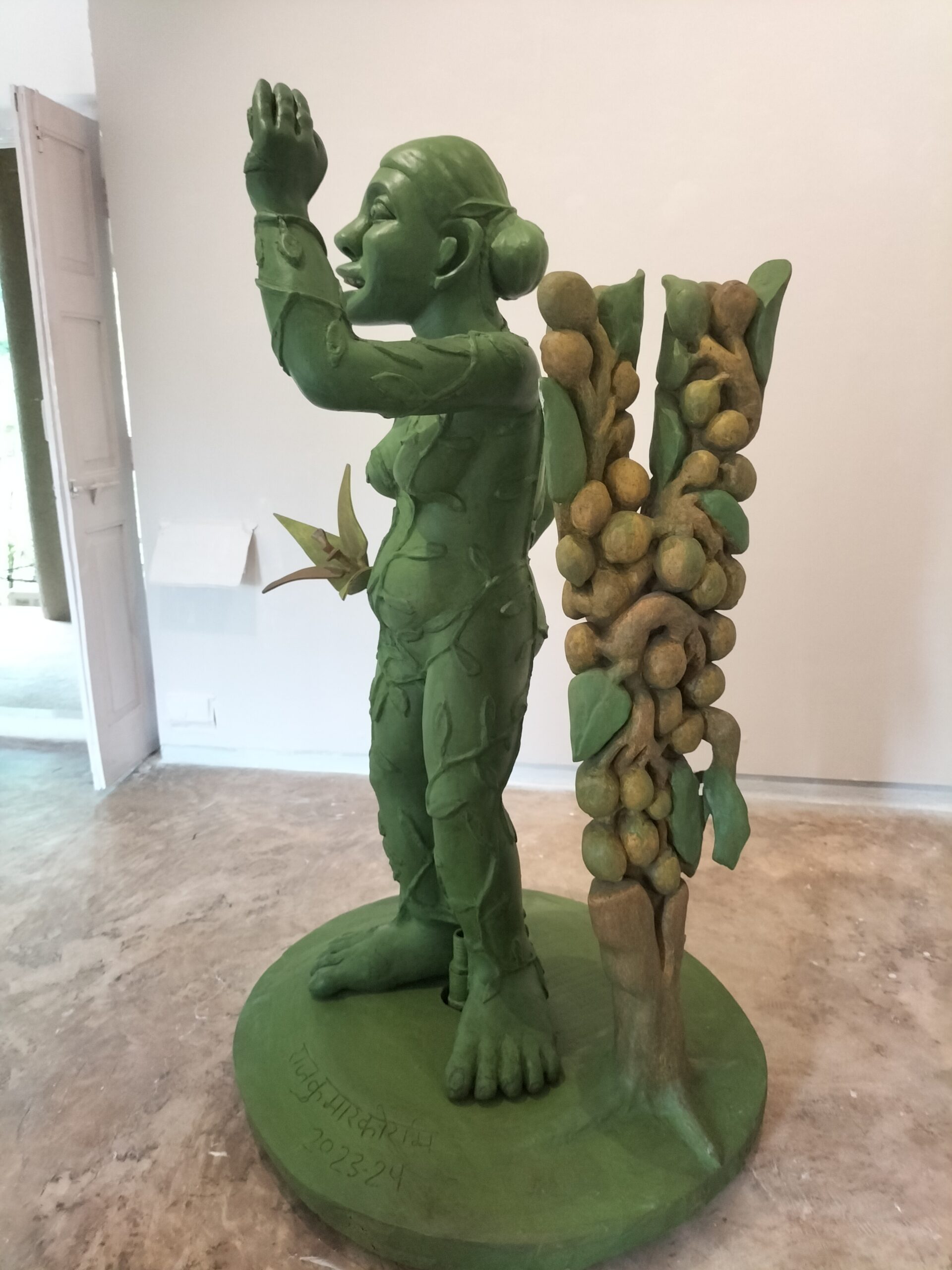
The wood and iron sculptures Mati Aya, Mother Earth and Tigress, Pride of the Country, Queen of the Jungletake on ecological allegory directly, presenting animals, plants and goddesses as both precarious and instructive figures whose contours have the animated spontaneity of sketches. The sculptures are painted in a muted green with a waxy finish reminiscent of mature leaves rather than the bright, glistening shades of a tropical forest, pointing to a subdued endurance of vegetation under pressure. These choices ensure that the ecological concerns at stake are not aestheticised into beauty, but held at a level of unease, encouraging sustained reflection rather than fleeting admiration.
Perhaps the most intricate works in the show are two installations — Turtle, Water and Leaves Give us Lifeand Crab, Mud and Swamp our Life — made of bell metal (a variety of bronze high in tin) featuring amphibious ecosystems of turtles, crabs and aquatic flora. The works are examples of the Dhokra art form practiced in Chhattisgarh, Jharkhand, Odisha, and Madhya Pradesh, where bronze is cast using the lost-wax method. These animals are endemic both to the local ecology, and Dhokra iconography. These sculptures show multiples of the same creatures in different postures and orientations. The short, narrative-like sequences suggest a close study of the animals’ movements, and invite the viewer to be fascinated by their anatomy and texture. But if we zoom out, and compare these bronze works to the harsher images carved on the Khambas, we might be moved to see all depictions of nature in the exhibition under a similar light: an intimate relationship with nature that is at the brink of collapse.
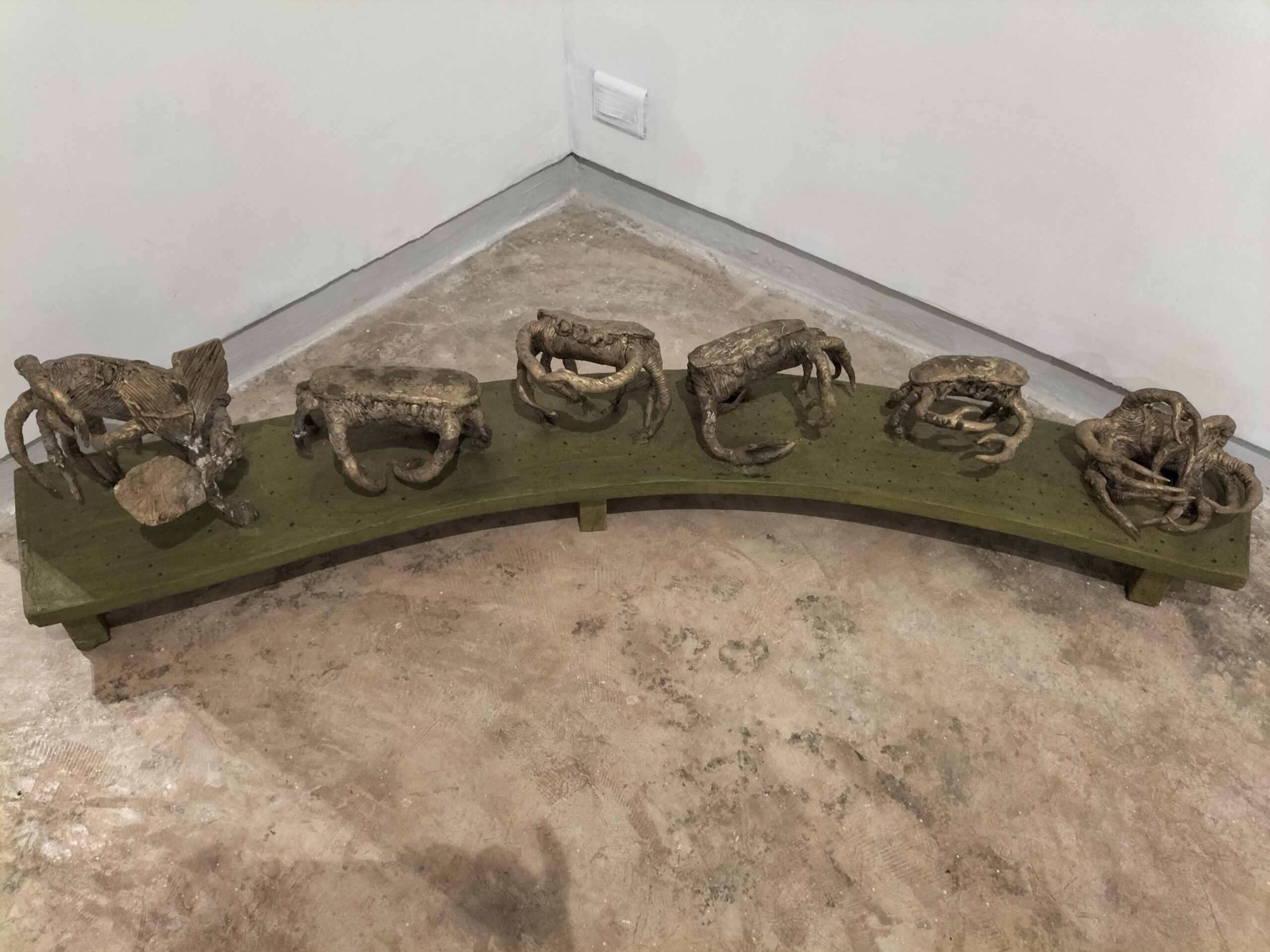
Far Reaching Earth, Far Extending Sky, Spread like a Mat, Covered like a Bowl is a reminder of the endangered continuities between nature and human society. As an adivasi artist operating in a network of institutions where urban, mainstream discourse remains dominant, Korram is uniquely positioned to dismantle anthropocentric hierarchies and highlight the perils of treating nature as a distant abstraction.
All Image courtesy: The Guild, Mumbai.
Far Reaching Earth, Far Extending Sky, Spread like a Mat, Covered like a Bowl, The Guild, Mumbai, 16th October 2025.



